#japanese tales
Text

Anthology of Japanese Tales for Children
(The Fairy Tale Writers Association)
1926
#japanese artist#japanese tales#japanese fairy tales#fairy#fairy story#fairy tale#children's literature#children's books#vintage illustration#children's book#old illustration#1926
148 notes
·
View notes
Text
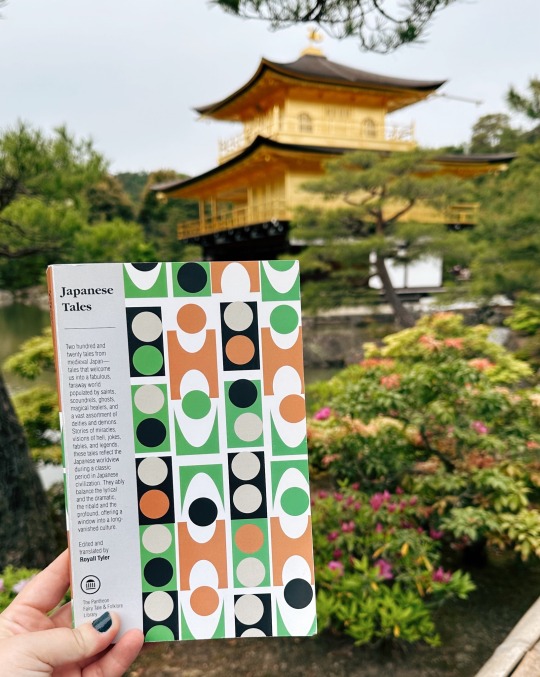
My partner got me Japanese Tales, edited and translated by Royall Tyler, for our trip to Japan this past spring. The volume accompanied me to Tokyo, to the old city of Kyoto, and to a hotel high above Osaka. In fact, it got relatively soaked in Kyoto rain on our visit to the Fushimi Inari shrine, so there's plenty of Japan still deep in its pages. But I didn't finish it in Japan—I finally went back and finished it this month.
Like other reviewers, I have to mention that yes, some of the tales are very dry, while others have strange translation choices, either including overly modern slang or even, Tyler mentions, "summarizing." But these are true folktales, not the spiced up modern fairytales, and Tyler tried to specifically gather tales that had been written down in olden Japan. So this collection really does show a glimpse into the stories that were once told "around the fire," and offers a fascinating look into Japanese folklore. Still, I think the volume could have been shortened—many topics were split in two but I found that Part I almost always had the best tales.
Favorites included different renditions of the girl born of a bamboo shoot, who would inspire Ghibli film The Tale of the Princess Kaguya; a couple ribald tales of tricks and caught-out affairs; many stories of everyday wisdom—the old man or chaotic stranger who turns out to be spirit or magical, my favorite of which was "The Old Mackerel Peddler"; a story where a bunch of men get their "members" stolen when they try to sleep with the magistrate's wife; some lovely fox spirit stories; and many wonderful stories where a person helps a helpless animal (usually a turtle) and gets their good deed well repaid.
Content warnings for sexual assault, pedophilia, animal cruelty, violence, ableism.
17 notes
·
View notes
Photo
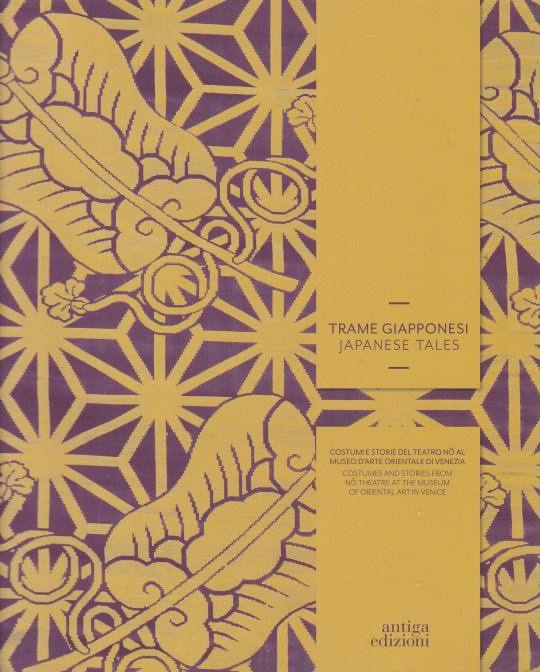


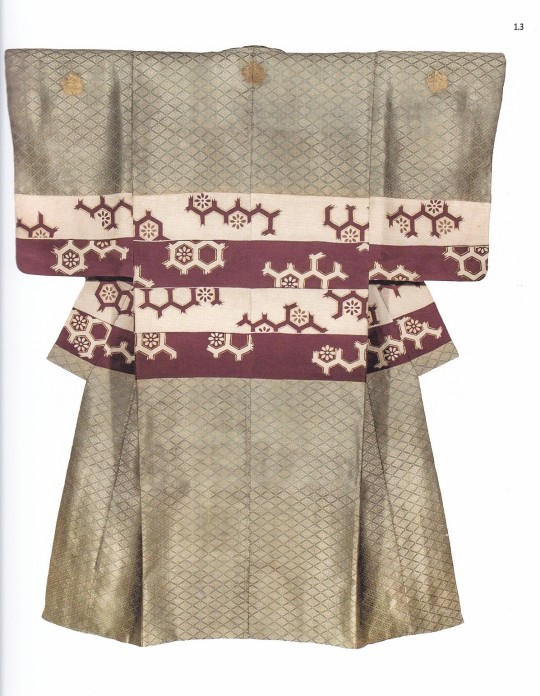
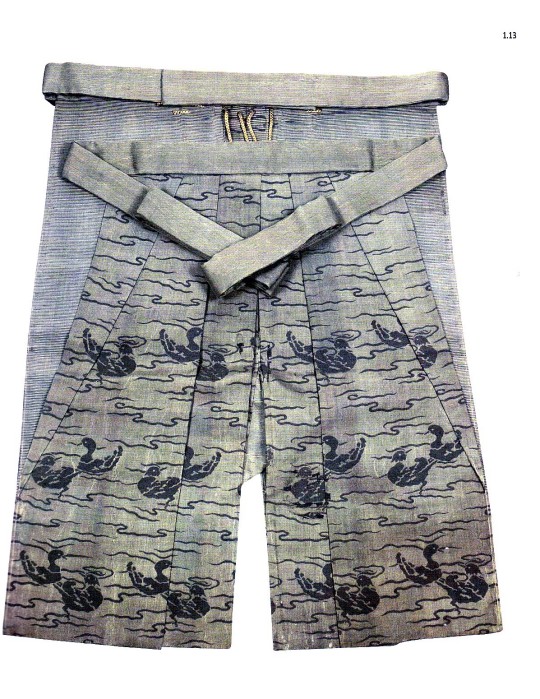

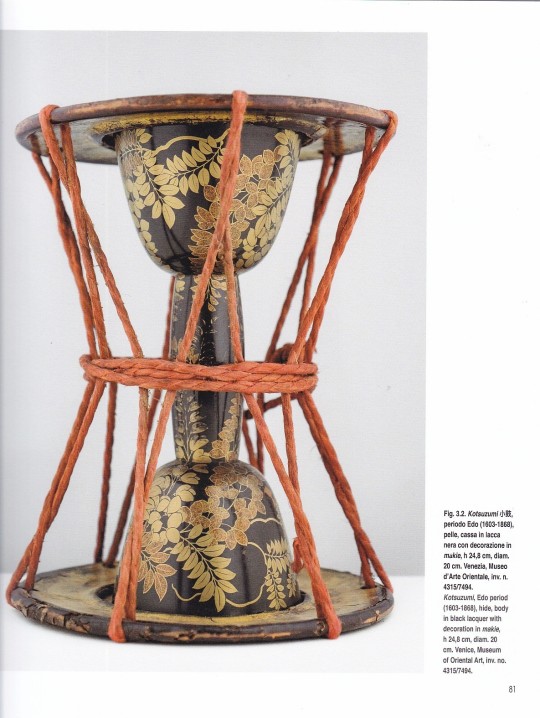



Trame Giapponesi Japanese Tales
Costumi e storie del Teatro No al Museo d’Arte Orientale di Venezia
Costumes and Stories from No Theatre at the Museum of Oriental Art in Venice
A cura di Marta Boscolo Marchi
Antiga Edizioni, Crocetta del Montello 2022, 160 pagine, brossura, ill.a colori, 22 x 28 cm, Testo italiano e inglese, ISBN 9788884353016
euro 30,00
email if you want to buy :[email protected]
Il catalogo si compone di alcuni saggi introduttivi dei maggiori studiosi del teatro No- in Italia, sulla rappresentazione, i costumi, gli strumenti musicali che accompagnano la performance e sul primo spettacolo di teatro No- tenutosi a Venezia nel 1953.
Nella collezione del Museo d'Arte Orientale di Venezia si conservano xilografie dei maggiori autori dell'Ottocento come Hokusai e Hiroshige, alcune delle quali raffiguranti la lavorazione della seta e alcune delle leggende che diedero origine ai drammi più noti del teatro No-, che accompagnano l'esposizione dei costumi e degli strumenti musicali.
Il Museo possiede sontuosi costumi in seta e oro, abitualmente non visibili al pubblico per motivi di conservazione, che nel volume Trame Giapponesi sono pubblicati con le loro schede tessili: tra questi kariginu, atsuita, karaori, hangire, oguchibakama. In contrasto con la sobrietà della scenografia, ridotta all'essenziale, i costumi degli attori spiccano per fasto e preziosità, catalizzando prepotentemente l'attenzione del pubblico.
Il volume riporta inoltre gli strumenti musicali dell'hayashi e l'orchestra per il No-, ovvero il flauto e le tre diverse percussioni (otsuzumi, kotsuzumi, taiko), che sono eccellenti pezzi artistici in lacca dorata, pelle e seta.
La pubblicazione è completata da una scelta di fotografie di Fabio Massimo Fioravanti, fotografo che da anni si dedica alle riprese del teatro No- in Giappone.
13/01/23
orders to: [email protected]
ordini a: [email protected]
twitter: @fashionbooksmi
instagram: fashionbooksmilano, designbooksmilano tumblr: fashionbooksmilano, designbooksmilano
#Trame Giapponesi#Japanese Tales#Museo Arte Orientale Venezia#teatro No#Hokusai#Hiroshige#strumentimusicali#costumi in seta e oro#Fabio Massimo Fioravanti#fashionbooksmilano
11 notes
·
View notes
Text
Suddenly, Horse Dung
One evening an imperial bath attendant (a woman) went off on a visit, taking her little son Akoboshi and some friends of his along with her. As twilight fell the boys began a wrestling game outside the house. Suddenly something like a huge curtain (they never did get a good look [at] it) came down over them from the wall they were playing under, and Akoboshi disappeared. The other boys ran off, terrified. They were afraid to tell anyone what had happened.
The woman was very upset when she missed her son and hunted everywhere for him, but in vain. In the middle of the third night after his disappearance there was knocking on her gate. Not daring to open it, she managed to cry out, "Who's there?"
"We want to give you back your son! Open up!"
She was too frightened to obey. Next, she heard voices on her roof and a roar of laughter. Something fell, or was thrown, to the ground. Fighting back her terror, she lit a torch and went for a look. It was Akoboshi, lying limp and still. The only sign of life in him was that he blinked.
She called a healer and his medium. When the medium went into her trance, Akoboshi was suddenly covered with some sort of brownish stuff. It turned out to be horse dung, three bucketfuls of it. Akoboshi never told what had happened to him, but he revived and was still alive ten years or so later.
This happened around 1215. I got this from someone who was there at the time.
- “Japanese Tales”, Royall Tyler
1 note
·
View note
Text
BLs to Recommend to Your Queer Friend
I put these in each bracket in levels of accessibility, as in “how easy I think they are for a non-BLer to enter into” without explanations of genre needed.

Bleeding Heart Romantics
Semantic Error
Bad Buddy
A Tale of Thousand Stars
Earnest Queer
The New Employee
My Ride
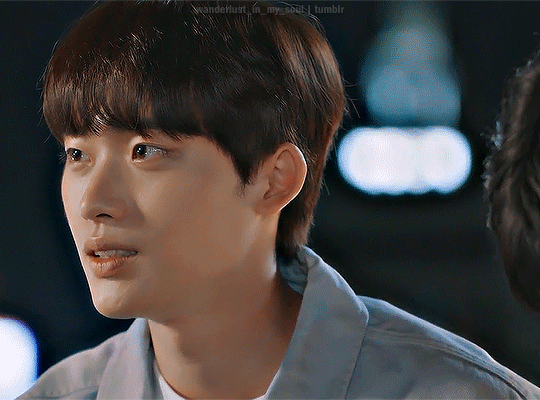
Drama Llama Indoor Kids
Our Dating Sim
Cherry Magic
My Love Mix Up
Repressed Arthouse Aesthetic
Old Fashion Cupcake
Love Life On The Line
Restart After Come Back Home

Hot Mess Gay Babies
The Eighth Sense
Moonlight Chicken
Hawt Mess Kinky Fuckers
Bed Friend
KinnPorsche
My Beautiful Man
Bonus Round:
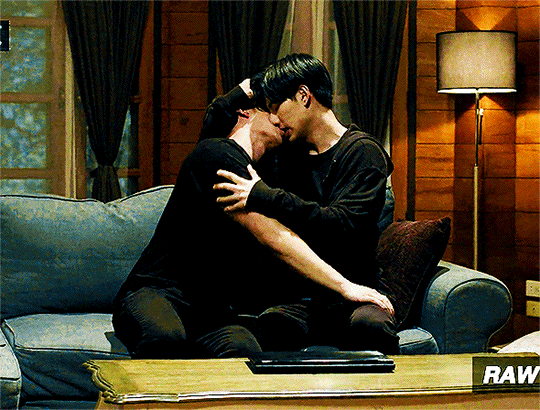
Adventure bois with a side of queer
Manner of Death
Not Me
Long Time No See
3 Will Be Free
He’s Coming To Me
From @mestizashinrin who asked me:
“recommend a queer person to first start in BL”
(source)
#asked and answered#recommended bl#top tear bl#queer bl#gay bl#Semantic Error#Korean bl#Bad Buddy#thai bl#A Tale of Thousand Stars#Old Fashion Cupcake#japanese bl#Love Life On The Line#Restart After Come Back Home#Our Dating Sim#My Love Mix Up#The Eighth Sense#Moonlight Chicken#KinnPorsche#Manner of Death#Long Time No See#3 Will Be Free#He’s Coming To Me
2K notes
·
View notes
Text




🍃 x - x / x - x 🌸
#fairy tale magic nature Mother Earth strikes again#cottagecore#nature#naturecore#flowers#flowercore#warmcore#photography#cherry blossoms#forest#japanese aesthetic#forestcore#wildflowers
3K notes
·
View notes
Text
In Tokyo, sixteen-year-old Nao has decided there's only one escape from her aching loneliness and her classmates' bullying, but before she ends it all, Nao plans to document the life of her great-grandmother, a Buddhist nun who's lived more than a century. A diary is Nao's only solace—and will touch lives in a ways she can scarcely imagine.
Across the Pacific, we meet Ruth, a novelist living on a remote island who discovers a collection of artifacts washed ashore in a Hello Kitty lunchbox—possibly debris from the devastating 2011 tsunami. As the mystery of its contents unfolds, Ruth is pulled into the past, into Nao's drama and her unknown fate, and forward into her own future.
Full of Ozeki's signature humour and deeply engaged with the relationship between writer and reader, past and present, fact and fiction, quantum physics, history, and myth, A Tale for the Time Being is a brilliantly inventive, beguiling story of our shared humanity and the search for home.
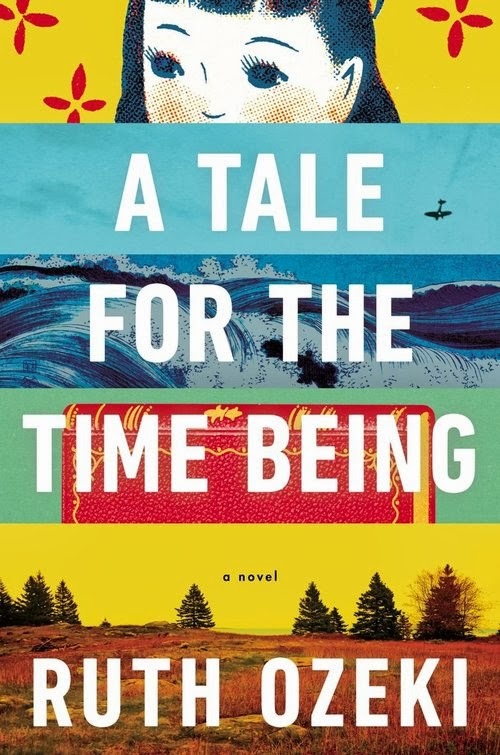

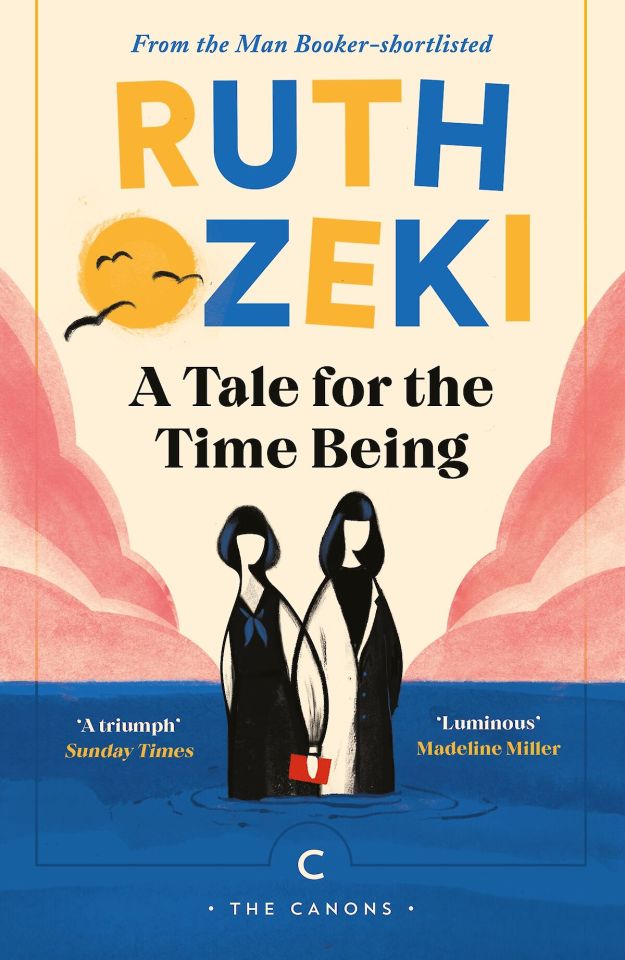

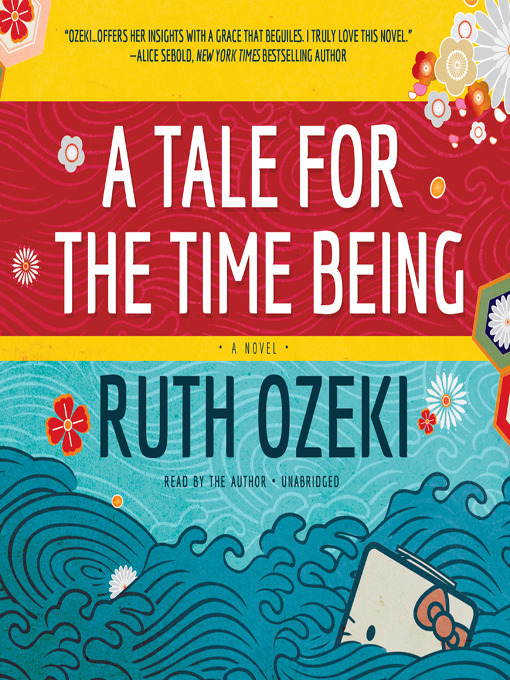
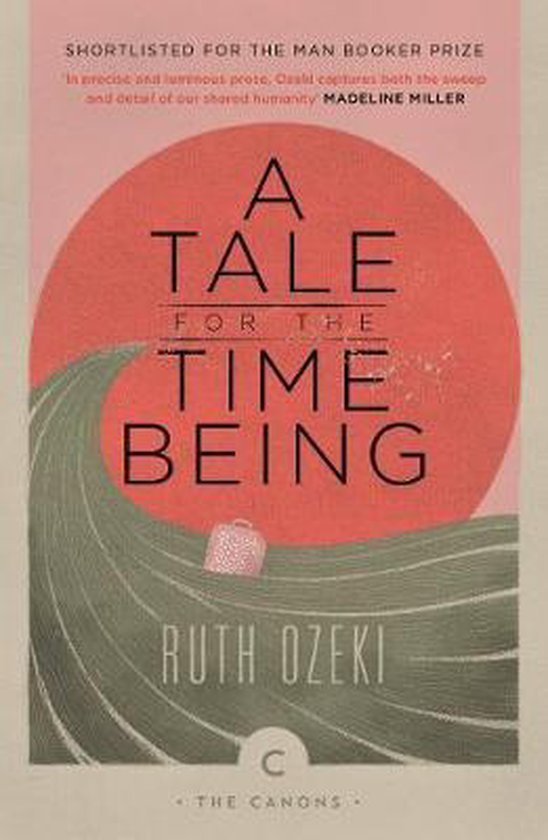
#book: a tale for the time being#author: ruth ozeki#gene: japanese literature#genre: magical realism#genre: historical fiction#genre: literary
240 notes
·
View notes
Text




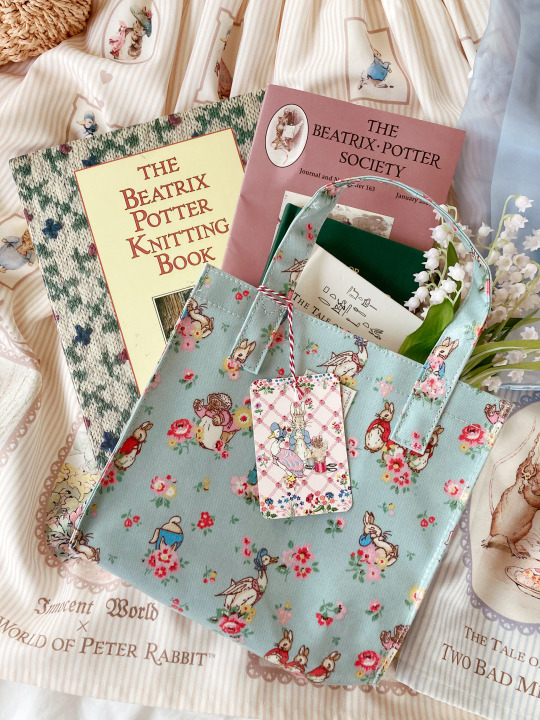

Been adding some more books to my collection. My favorite find being this vintage knitting book.
#peter rabbit#beatrix potter#lolita fashion#angelic pretty#innocent world#cottagecore#japanese fashion#cute#egl#alternative fashion#fashion#lolita coord#the tale of peter rabbit#egl wardrobe#my post
227 notes
·
View notes
Text
Running Commentary: What is “ok to do” in Mixed-Culture Supernatural Fiction?
Dear readers:
Today we are trying something new. To give you some insight into our process in the Japanese moderator section, we are presenting our response in the form of running commentary to show you how we dissect and answer long asks. We hope this makes clear what points are useful and not useful when sending us a query. As always, this is for learning purposes, not callouts. Be prepared: this is a long one.
To summarize: the asker is looking to create a comic drawn in Japanese manga style, and has provided a long summary of the story and worldbuilding which involves a mix of “reimagined” Japanese yokai mythos and cultural symbols from many other sources. They have questions with respect to cultural appropriation, coding etiquette, and “what is and isn’t ok.”
Opening Comments
I know a common advice when it comes to the thing I am about to ask is to talk to people involved in __, but I struggle with opening up to strangers for reasons I'm uncomfortable explaining.
Marika (M): This is already a red flag. If you want to engage with another culture without talking to people from that culture, then research is going to be very challenging. You won’t have members of that culture to guide you towards sources and perspectives they feel most accurately represents public opinion. If I were in your shoes, I might start with tackling my discomfort when engaging with other people, if only to improve my work. If you aren’t ready to engage with a culture and its people directly, then I think you should wait until you are.
I should note, reaching out to the Japanese mod team at WWC does count as engagement, but WWC should not and cannot be the only point of contact because there is no single, legitimate cultural perspective.
Rina (R): Also, you don’t need to “open up” to strangers or talk to them in person to get perspectives. Asking specific research questions anonymously to a forum or on social media requires very little vulnerability. You managed to do it here on WWC. So give it a try!
Anyway, my question basically amounts to the what is and isn't ok [sic] in terms of depicting fantasy creatures and concepts outside of their respective culture.
R: So, the reason why we turn away rubber stamp questions by that ask “is XYZ okay?” is because “okay” & “not okay” 1) is vague and 2) creates a dichotomy where there isn’t one.
When we say something is “not okay,” do we mean:
It’s offensive to the general majority of XYZ group?
It’s contentious among people who ID in the group?
It has a potential to be interpreted in a certain negative way, but may not be a red flag to everyone?
Insetad try asking:
What are the reasons this subject is offensive?
What makes cultural appropriation bad?
When might it be “okay” to intentionally discuss a difficult or controversial topic?
What is your reason for including something that may be interpreted as offensive and can it be sufficiently justified?
What stereotypes or tropes might it be consistently identified as or associated with, and why?
When might it be justified to bring up these tropes?
With That In Mind...
Let’s get into the rest of the ask below.
…a story I've been working on in recent times is largely inspired off the Japanese yokai, and the setting is basically Earth in the far future, as far as when the next supercontinent may form. These yokai, although portrayed differently here, do retain their main characteristics [...] Included in this world are two goddesses of my own creation, primarily representing the sun and the moon. [...] There will be thirteen nations, named and based after the Chinese Zodiac, and the life force found in the living things in this world, called qi, comes in two forms that are always opposing each other but can never fully overpower the other, this being based off yin and yang. They're even directly named this; yin qi and yang qi.
M: This reads more like using Japanese and Chinese culture for the “aesthetics”, not the cultures themselves, which I personally feel falls under cultural appropriation. From a world-building/ coding standpoint, the actual use of concepts is workable, and, dare I say, typical, given how Chinese cosmology influences Japanese culture. However, naming a concept “yin qi” or “yang qi” is the equivalent of naming something “- charge” or “+ charge”, respectively. That you don’t seem aware of this tells me you are pretty early in your research phase. In that vein, we’ve covered translating terms and names from foreign languages in fantasy before. See the following article linked here for our recommendation against using RL terms outright but instead encouraging people to create their own conlangs.
R: Worldbuilding-wise, I think you would have to figure out the chicken-or-egg of the zodiac nations. Did the nations come first, and the zodiac later as an origin folk story (which you would have to rewrite to serve the nation-building narrative)? Did the zodiac come first, and the nations named (most likely re-named) by a political entity? What is the justification? Otherwise, again, it’s a shoehorning of aesthetics.
There is also a third, lesser known god based off of fox spirits and trickery and I imagined he's the patron deity of a family that honors and worships him, but his influence on them has transformed them into Kitsune-tsuki, which I depict as fox-like anthros.
M: Not related to this ask directly, but I have jokingly ranted about how often non-Japanese people prefer using imagery related to kitsune-tsuki in Japanese coded world-building (link). This makes me feel the same level of petty irritation. See my troll answer below for a similar experience.
R: Same. It’s boring tbh.
M: Troll Answer: I get that kitsune-tsuki are very sexy furries, but Japanese folklore has other sexy furries too! These underrepresented demographics also deserve recognition and appreciation!!
The plot of the story is this; modernization has left the goddesses neglected of their worship and forgotten, something that is necessary in this world to stop them from fighting each other. The Moon Goddess awakens first, punishing the humans by unleashing the yokai. Then the Sun Goddess wakes up to fight in humanity's defense…
M: This could feel rather like Shinto-like coding (Ex. the myth of Amaterasu and the Cave, or Tsukuyomi slaying Ukemochi), but something about this scenario feels a bit too binary in terms of themes of good v. evil, light v. dark to be Shinto. The plot also feels more Gaelic/ Nordic in influence for me as a person raised in a Japanese Buddhist and Hindu household. I imagine this dissonance could have been fixed with better guided research.
…but their fighting has caused a perma-eclipse and this world is in danger of ending. The yokai have run rampant; some are loyal to the Moon Goddess, and some aren't, and it lies to the main characters to bring balance back to Midgard. Yeah... the name of this future Earth is Midgard. I debate changing it since it and some other things I will mention sorta feel out of place.
R: Marika, looks like you were right on the Gaelic/Nordic influence /j
Also, worldbuilding question: if the Earth is in the far geologic future, how long has it been since modernization (19th-20th century)? Centuries? Millennia? How long has this fighting gone on for? What triggered the perma-eclipse, and why now? Why is this time depth necessary?
One of the main characters in question is a humanoid woman with wolf features named Ling, and she is a descendant of the dynasty that had first ruled the one of the nations, particularly the one based off the dragon zodiac. She accidentally summons the other main character to this world as she's praying at a shrine, a humanoid with dragon features--I call them drakon--named Angelynn.
[on the names of characters] is it appropriating by not having the world entirely based on [Chinese, Japanese, and Indian] influence? it's a little weird to me how worldwide the creatures are referred to as yokai, implying a strong Japanese influence not unlike how it is today with Western culture being so dominant, yet there are still names like Keith and Kiara.
M: I will give you credit for recognizing you have unconsciously veered towards white-washing/ race-bending: either presenting European cultural influences (drakons, Angelynn, Keith, Kiara, Midgard) as default or utilizing general E. Asian cultural influences and aesthetics for a Western-style story (Ling, qi, Chinese zodiac, yokai). I agree with you that this creates a sense of cultural dissonance. At this point, I’d say you have a clear choice: write a Western-style high fantasy using a background with which you have more familiarity, or get some better guidance on research with East Asian cultures so you can code the story more effectively.
The focus of this story is centered around meeting all these yokai and showing that there's more nuance to them than Ling believes, all while saving the world. But I worry if I'm appropriating these concepts and creatures by 1, drawing from more than one culture--I initially imagined that there would be a mix of Chinese, Japanese and Indian influence because according to a website I am getting the info on yokai from, the yokai in question already draw inspiration from or have been based on something in Chinese mythology or Hinduism [...]
R: Sure, some yokai have Chinese or Hindu parallels as that tends to happen with folk tales. But not all–some are unique to Japan, and some are more modern. Sometimes it’s very political–some people consider the Ainu Korpokkur as being a “Yokai of Japan” despite it belonging to the indigenous culture. It’s up to you to research, untangle, and understand these influences.
The fact that you bring up that the Asian continent has seen a lot of cultural exchange is not a sufficient reason to randomly combine influences for the sake of visual appeal or “coolness.” That is appropriation. These influences must be understood in their historical context so that you know how/why certain things combined or morphed into another, and what makes sense to combine/morph.
M: This also indicates that the character views the yokai as evil/inherently bad, which I would argue is not a typical stance for much Japanese folklore. Again, this shows a deficit in research.
2, reimagining these yokai in a new context even though I have done the research on them, because one thing I kept seeing in regards to cultural appropriation is that it's bad to do that […]
R: Refer above to my note on “okay” and “not okay.” The thing with folklore and fairy tales is that every–and I mean every–folk tale is reinterpreted with every new iteration of it. Reimagining in a new context is what people do every time they pass on a story or tell a story with the same plot or characters. Do not think of folklore as an “original” that is altered and rebooted, but rather a living document that gets added to. Reimagining is not the inherent issue. HOW you reimagine something matters.
So I suppose my question is...if someone were to do research upon the creature they want to use, given they are allowed to use it, and gained an understanding of what the creature or concept stood for, are they allowed to pick it apart and reimagine it? Alternatively, is it ok if it's explicitly pointed out that it is derivative of the original?
It has actually become my biggest fear that I may have internalized something that could both continue to do harm long after the fact and attract the wrong people to me work. I don't wanna let people down!
M: As Rina has noted several times, I think the problem is in trying to ID a set of specific variables and circumstances that make a thing “okay” or “not okay.” I want to recommend that you read my joking response about writing in secret rooms while wearing a disguise (Linked here). Who can you hurt if no one knows what you are doing? There’s a difference between creating for oneself and creating to share.
You have internalized a message incorrectly, but not the one you cite. The goal of many recommendations against cultural appropriation is to avoid causing direct harm to people who have seen their cultures demeaned, discredited and devalued, especially in shared spaces. Assessing cultural engagement, whether we are talking about appropriation, appreciation or exchange is not a measure of personal virtue or a collection of commandment style do’s and don’t’s. Rather, I believe engaging with other cultures is the state of mind of acknowledging that when using these cultures’ in one’s own work, there is value in consulting members of that culture and giving credit where credit is due. This will be challenging if you are only comfortable engaging with all of these cultures in a distanced, minimal capacity.
FWIW, I’ve written stories that probably will offend people from other cultures and backgrounds, but I don’t show them off. I don’t think writing these makes me a bad person, but I also don’t see the need to give unnecessary offense, so those stories are just for me, to be written and read in my own secret room. However, I’m not ashamed of having written them, and I’m also comfortable to “let people down” provided that my own shared work reflects my personal principles of what I consider to be sufficient research and engagement with other cultures, As a creator, my work wouldn’t be mine if I didn’t first please myself. I think the trick to the creator role is deciding what to keep private, what to share and what constitutes sufficient engagement.
P.S.
We’ve referenced the need for research multiple times in this ask, and in some of the other asks that have gone up this week, so we thought this would be a good place to plug a beginner’s guide to academic research created by the mod team.. Look for it soon under WWC’s pinned posts!
#japanese#chinese#fantasy#cultural appropriation#coding#worldbuilding#names#mythology#folklore#fairy tales#asks#running commentary#writeblr
581 notes
·
View notes
Text
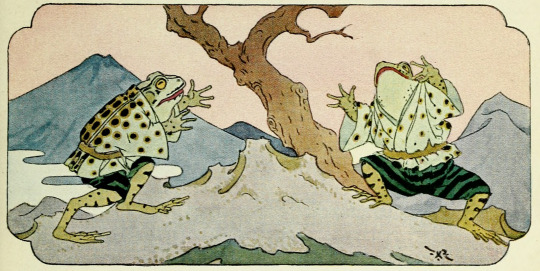
Illustration for "The Two Frogs." Little Peachling, and other tales of old Japan. 1928.
Internet Archive
1K notes
·
View notes
Note
Could Princess Kaguya from Japanese mythology kill Macbeth?
Yes, Princess Kaguya from the Tale of the Bamboo Cutter could kill Macbeth!

A celestial princess born from a glowing stalk of bamboo upon it being cut open by a man named Taketori no Okina, she applies for the Gender Clause, Unconventional Birth Clause, and Birth Parent Clause!
Thank you for your submission!
#asks#unconventional birth clause#gender clause#birth parent clause#princess kaguya#japanese mythology#tale of the bamboo cutter
178 notes
·
View notes
Note
What if Disney adapted the Tale of the Bamboo Cutter?
I am only vaguely familiar with the context of this story, but I don't think I would give it to Disney. While I'm inclined to say that it would be better adapted into Japanese animation, for Disney vibes without involving Disney, I would latch onto the moon celestial aspect and ask the team from Over The Moon to do it. But beg them to pretty please make it all in their 2D storybook style:

This story is a true tragedy, at least from a mortal perspective, and I think these dreamy, romantic visuals would suit it:
A bamboo-cutter discovers a tiny baby inside a shining stalk of bamboo and he and his wife take her in as their own child.
From that moment on he finds gold inside every stalk he cuts has a nugget of gold inside it.
The baby, Kaguya-hime, grows into a young woman in just three months and is so beautiful that even though her parents try to hide her, men start to come from all over to court her.
Five noblemen are put through impossible trials which they all fail to try and win her hand.
The emperor of Japan falls in love with her, but she won't even have him for a husband, even though she keeps writing with him.
Three years pass and in the summer the mysterious maiden begins crying whenever she sees the moon. At last she reveals she is not of the earth but belongs on the moon and will be taken back there, to parents she has by now forgotten.
Her foster parents try to hide her, the emperor even sends guards to keep away the envoys of the moon who come to fetch her, but of course to no avail.
A chariot comes down for her with the rising of the yellow harvest moon. A messenger tells the bamboo-cutter that Princess Moonlight was sent to earth as punishment for committing a grave fault and that they have sent him the gold in return for the good care she received.
He begs for them not to take him and Kaguya-hime tells him she goes against her will and would rather have stayed with her loving foster parents in their old age, but she must go.
Her foster father is not allowed to go with her. She gives him her embroidered robe as a keepsake. When she is given Elixir of Life to drink she even tries to share it with him, but she is prevented.
Finally she writes a letter to the emperor, encloses the rest of the Elixir of Life and gives this to her foster father, asking him to deliver it. Then she ascends into the sky in the moon chariot.
The emperor has her gift bunt at the summit of Mount Fuji so that the smoke can be seen rising from there to this day.
I think a faithful adaptation should keep it a tragedy, but perhaps there could be just a little bittersweet mixed in with the sorrow for the poor parents. Maybe they can hear their daughter singing to them when they look up to the moon. Or perhaps the ending could be made a little less formal and the princess's celestial parents can come down themselves to get her back and to thank her mortal foster parents for all they have done for her. If I were adapting this I would downplay the part of the emperor a bit and really put the focus on the relationship between the moon princess and both her foster parents.
#The Tale of the Bamboo Cutter#laura babbles#disney goggles#japanese fairy tales#I am aware that Over the Moon was inspired by Chinese folklore#but the “lady pulled away to the moon motif” is strong
92 notes
·
View notes
Text
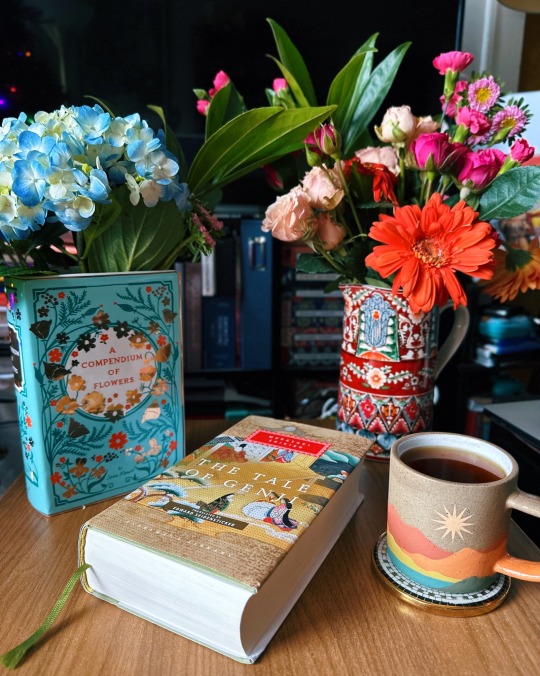
Genji is not a perfect person, but there’s a purity to him, a beauty that’s clearly meant to be lauded, particularly in contrast to later chapters. He’s in love with love, a true romantic, and his sometimes unwise affairs are motivated by a true sense of love. He never abandons one of his lovers, which in this time is crucial. No matter the shame it brings to himself, he tries to find a way to honor the women he’s fallen for. He’s charming. No one can not love him, or ultimately forgive him his faults.
The age of Tale of Genji had strict rules of romance—of how flirtations worked (largely intermediaries and poetry), of how commitments worked, of how aloof vs. present it was appropriate to be (it’s good to commit but bad to hoard or become jealous). It was possible to love too much. Genji is accused of this, but he always remembers to care for the people he is responsible for—once he grows up that is.
Early in the text, he neglects his wife, and he also neglects “the Rokujo lady.” The Rokujo lady becomes so jealous and enraged that her spirit begins to sicken his wife. This ghost returns more than once over the course of the text. She has grown sick from obsession and neglect, and Genji pays the price for it. It’s part of what motivates him to always care for the women he romances for the rest of his life.
Later, in the “Uji” chapters, young Kaoru and prince Niou also love too much. Niou is impulsive like Genji but also flighty, and Kaoru is serious like Genji but also obsessive. Both men pursue the women at Uji with insistence that the text can’t quite forgive as it could for Genji. Both, somehow, go too far—perhaps in their attempts to hoard, or in their impatience.
1K notes
·
View notes
Text
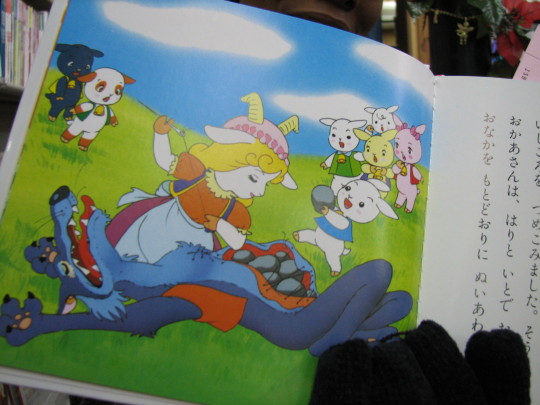
꧁★꧂
#book#fairy tale#story book#fable#goat#wolf#big bad wolf#gore#body horror#morbid#illustration#japanese#japan#flickr#oldweb#old web#2009
93 notes
·
View notes
Quote
Tateyama, a mountain in Etchu province, has been known since antiquity for its hells. The rugged, sweeping landscape there is desolate, and countless boiling springs gush from deep fissures in the ravines. Even a huge boulder resting on one of these cracks may be set rocking by the water that surges up irresistibly around its base. The heat is terrible, and you come eventually to a column of endless fire. In one valley of this hellish waste there is a waterfall over a hundred feet high that looks like a vast expanse of white cloth.
“Japanese Tales”, Royall Tyler
0 notes
Photo

Princess Kaguya (2023)
Illustration for japanese 10th century fairytale " The Tale of the Bamboo Cutter".
#princess kaguya#the tale of the bamboo cutter#japanese#japan#moon#sakura#moon princess#deer#raccoon#hare#rabbit#bunny#marysmirages#kaguya#moonlight#fromthemoon#art#painting
708 notes
·
View notes